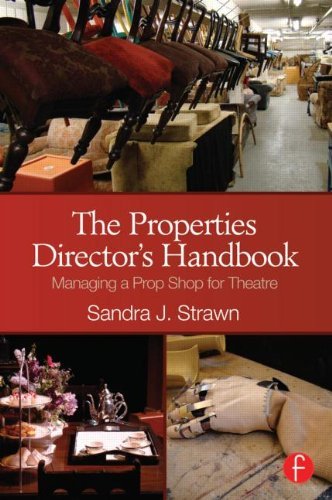A few years back, I was working on a project in a facility that had a number of groups using the space. There was a group of students doing the props and furniture for a show, and they were so proud of how far under budget they had come. They were given $300 to do all the props and furniture, and they had only spent $30. Â Here’s the thing though: it looked like they had only spent $30, and spending a bit more money could have made it look a whole lot better.
We talk about the importance of not going over budget, but we rarely talk about the flip side: not using enough of your budget. As props people, we are always looking for a great deal or a bargain that other mere mortals may think impossible. And it’s great to get an item for a fraction of the price you would normally pay… if it looks like the full-priced item. If you have $300 to spend, it should look like you spent $3000.
It’s a great skill to try and produce as much as possible for as little money as you can. If you have zero budget and you only spend $30 on all the props and furniture, that’s quite the achievement. But if you are given a budget of $300 and you still come in with the $30 solution, it makes me wonder what happens when you have a budget of $1000. Or $3000. Or $10000. Are you still going to show up with the $30 solution? Because managing larger budgets has its own set of skills: knowing when to buy nicer materials, or when to buy certain items to save time fabricating them; paying money for little details that make your prop look more like the real thing; hiring extra help or outside contractors to help you get more done in the same limited time frame.
It makes sense if you compare it to your other resource: time. If you only have two hours for a project, you will probably come up with a very creative and inventive solution, albeit not a very impeccable one. Now, if you have two weeks for the same project, imagine showing up with a prop that looks like you whipped it out in two hours. You wouldn’t let your time go to waste just to prove you can make a prop with minimal effort, so don’t let your budget go to waste just to prove you’re a spend-thrift.
With time, we are almost always working right up until the props are taken from us (or the audience is being seated). I usually have a few notes left on my to-do list by Opening Night because I can always find things to improve. The show is certainly fine if I never get around to them; I just find it difficult to declare, “Everything in this show is perfect, and I can stop working on it.”
The same is true with the budget. I allocate all the money I have to specific items; I don’t leave any large chunks sitting around (other than contingencies, which I build into the budget). Of course, as rehearsals progress, the budget shifts around; items are added or altered, I discover solutions that allow me to save money, etc. If a change requires me to spend more money than I was anticipating, I take that money from something less essential. However, if new conditions cause me to save more money than I was anticipating, I find somewhere else to spend it. Maybe I was using a cheap solution for a nonessential prop, and now I can buy a nicer version for stock that I know I will use in later shows. Maybe I buy some hardware that I was planning on fabricating, and save myself some time that I can use elsewhere. Or maybe I just buy some more dressing, because you can never have too much dressing. If everything works out, by the time I get to opening, my budget is pretty much on the nose.
Sometimes, things are cut or changed at the last second, and the opportunity to spend the money never comes up, and I come way under budget. I don’t just run out and start buying random things. The important point is that I had plans for that money. You should have a plan for how you are going to spend every dollar in the budget given to you, rather than trying to avoid spending any dollar. You can tell when things were done for cheap.



